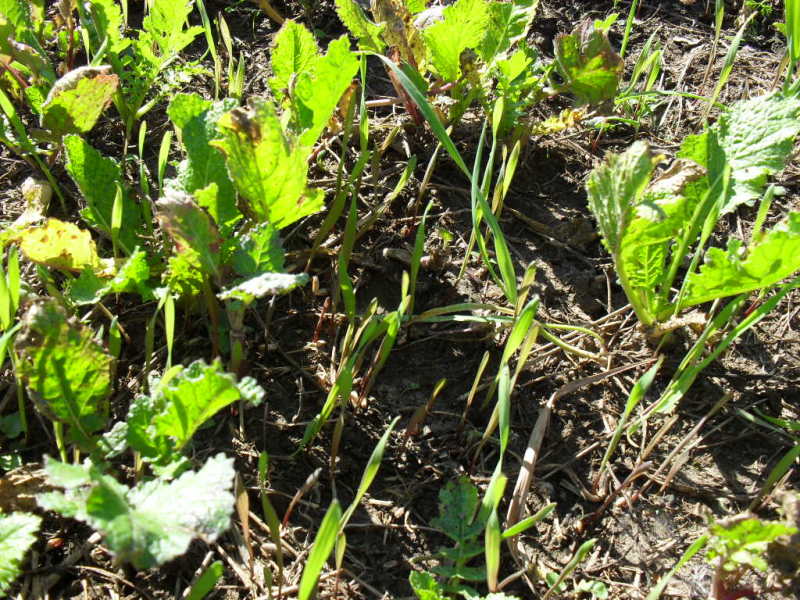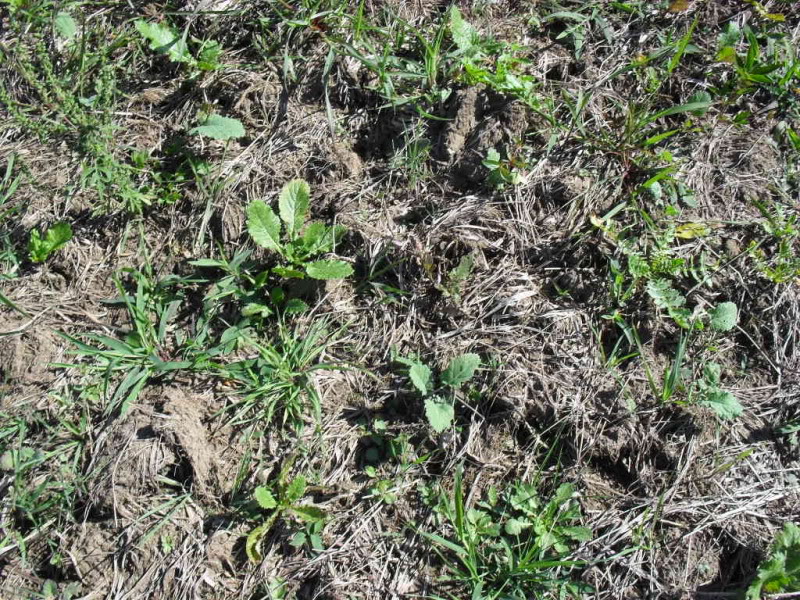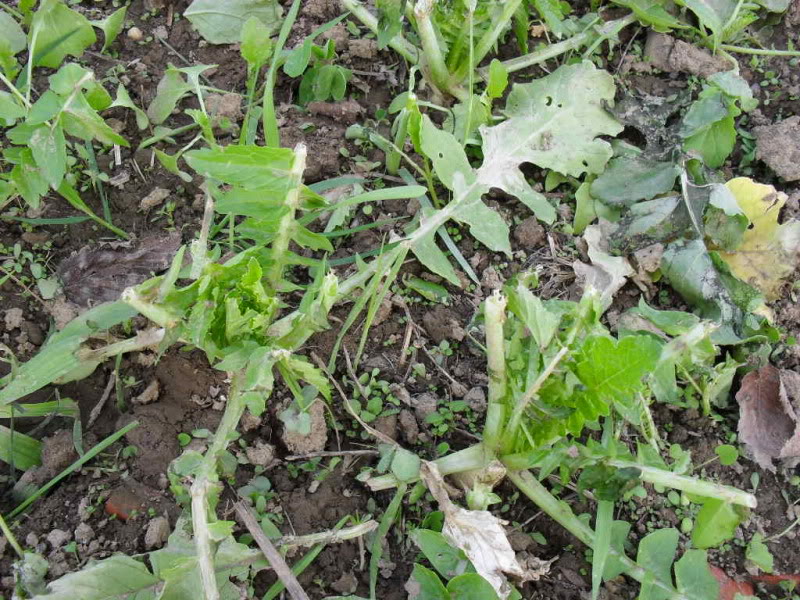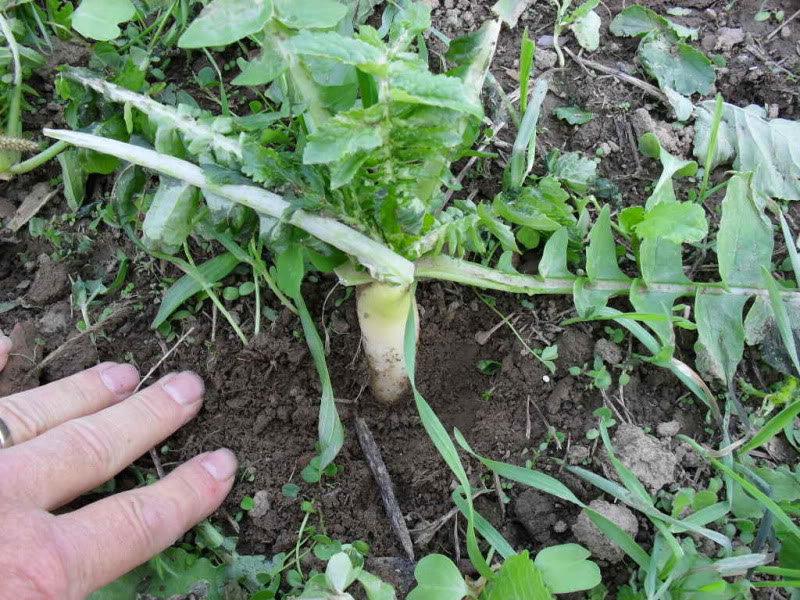dbltree
Super Moderator
Sometimes it takes me a bit to put two and two together but two days after clipping my clover and alfalfa strips adjacent to my brassicas, they immediately started mowing my brassicas.
Just didn't really hit me that one had anything to do with the other but now that my alfalfa and clover has recovered and regrown, they are hammering them and allowing the brassicas to re-grow a bit.
You can see the Alice white clover is being hit pretty hard in this pic

Along the edges the brassicas still look pretty sad

but the interior of the plots are recovering nicely

We need rain in the worst way but still they are doing better then I expected after intially being grazed nearly to the ground

It appears that all of the varieties are recovering more or less equally.
The weather forecast was calling for good odds of rain Sunday (on Saturday) so I overseeded winter rye into the worst (most heavily grazed) brassicas and made a pass with some fertilizer across some just for a comparison check.
I returned home to see that within hours the forecast had changed and rain was perhaps several days off. You see why attempting to top dress fertilizer can be a crap shoot? Even with more stable forms of N, without rain it just doesn't reach the root zone while tilled in nitrogen is where it needs to be with or without rain.
This is a great time of year to pick up some dirt cheap fertilizer at places like Wally Mart as they try to clear the shelves for the season. I always nab a few bags of high N lawn fertilizer with OUT weed killer! It's usually at least partially treated with urease inhibitors so if one doesn't get rain it's not a total losss.


Some is going to end up in the leaf furls and may cause some minor burning but generally no serious harm

Where it was most heavily grazed I over seeded winter rye

You can see how dry and cracked the soil is so nothing is going germinate until we get rain

We'll check back on this if and when it ever does rain and see if the rye finally does germinate.

Just didn't really hit me that one had anything to do with the other but now that my alfalfa and clover has recovered and regrown, they are hammering them and allowing the brassicas to re-grow a bit.
You can see the Alice white clover is being hit pretty hard in this pic

Along the edges the brassicas still look pretty sad

but the interior of the plots are recovering nicely

We need rain in the worst way but still they are doing better then I expected after intially being grazed nearly to the ground

It appears that all of the varieties are recovering more or less equally.
The weather forecast was calling for good odds of rain Sunday (on Saturday) so I overseeded winter rye into the worst (most heavily grazed) brassicas and made a pass with some fertilizer across some just for a comparison check.
I returned home to see that within hours the forecast had changed and rain was perhaps several days off. You see why attempting to top dress fertilizer can be a crap shoot? Even with more stable forms of N, without rain it just doesn't reach the root zone while tilled in nitrogen is where it needs to be with or without rain.
This is a great time of year to pick up some dirt cheap fertilizer at places like Wally Mart as they try to clear the shelves for the season. I always nab a few bags of high N lawn fertilizer with OUT weed killer! It's usually at least partially treated with urease inhibitors so if one doesn't get rain it's not a total losss.


Some is going to end up in the leaf furls and may cause some minor burning but generally no serious harm

Where it was most heavily grazed I over seeded winter rye

You can see how dry and cracked the soil is so nothing is going germinate until we get rain

We'll check back on this if and when it ever does rain and see if the rye finally does germinate.











































